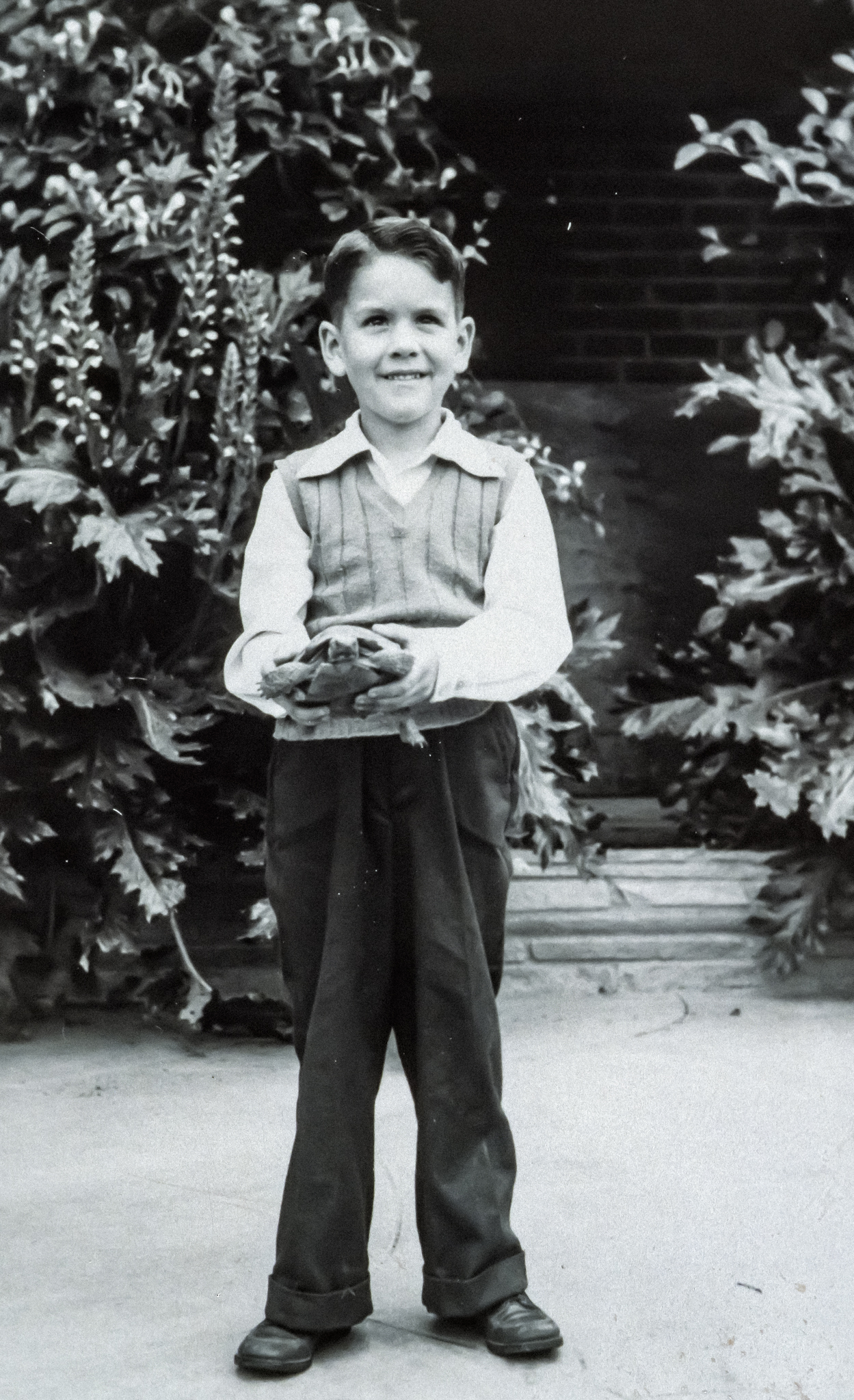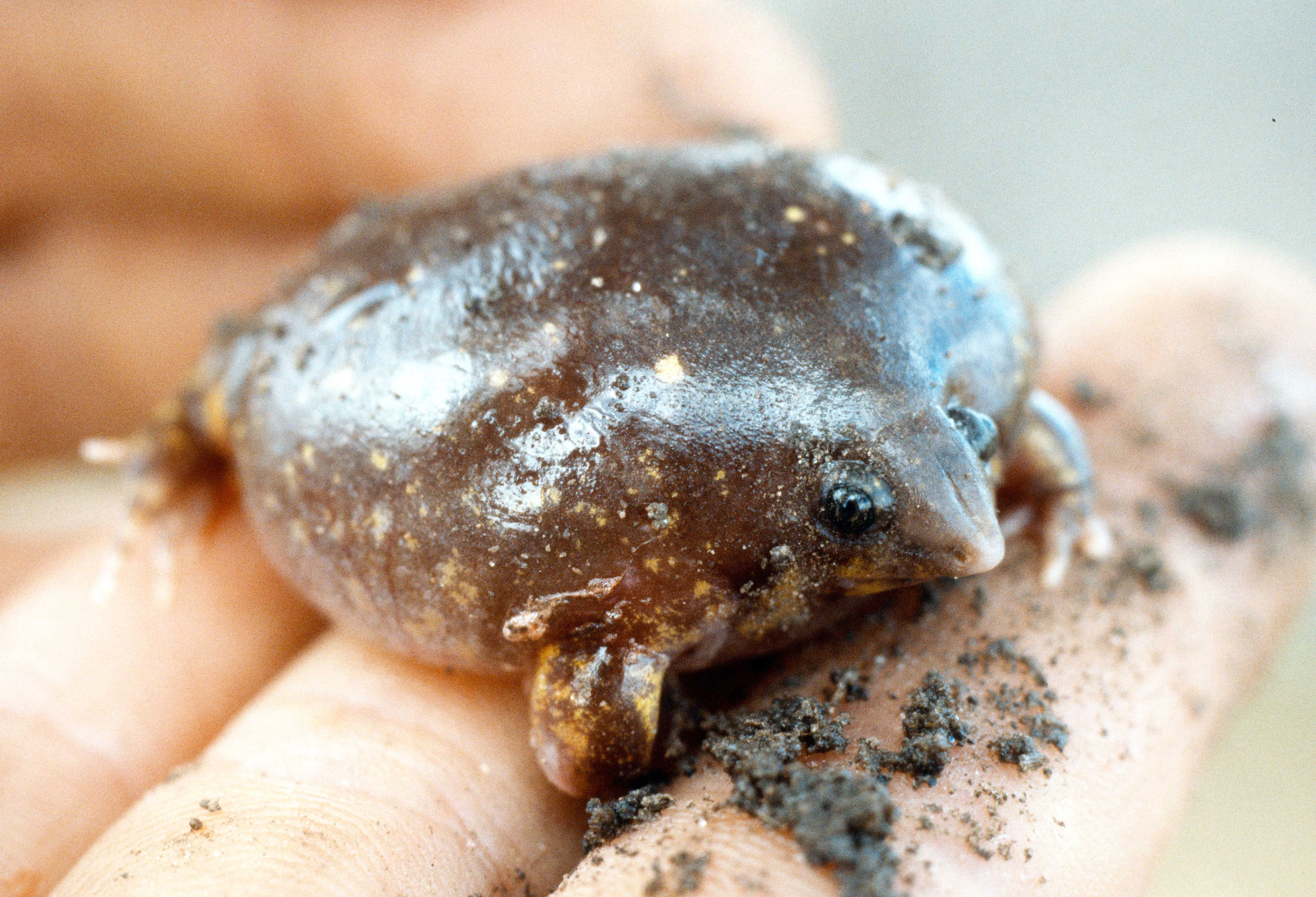2 First encounters with herps
Many – if not most – of my academic friends and colleagues were avid naturalists, even as children. I was not. Lizards and snakes must have lived in my neighborhood in Long Beach (CA), but I never noticed any in nearby gardens or in the few remaining vacant lots. Even so, two early encounters with herps left vivid memories.
2.1 Encounter with a desert tortoise
When I was in kindergarten (thus age 5, ~1950), my family visited the spectacular rock formations in Red Rock Canyon in the Mojave Desert. I was excited as I’d never been to a desert. At some point, our car got stuck in a sandy wash below the cliffs. I must have been obnoxious as my mother gave me a small shovel and said something to the effect of “Go dig – anywhere!”
I wandered away from the car and looked for a place to dig. I suddenly had an urge to dig: my shovel acted as my biological dowser. Dig, dig, dig,…clunk. I’d hit something – indeed not a water pipe out in the Mojave – but a big desert “turtle”!
I have no idea what made me dig at that spot. I do not recall seeing the turtle down its burrow or even its burrow. I think I was digging haphazardly but I can’t be sure.
Or perhaps this encounter was a sign that I was predestined to be a herper, especially one with a shovel in hand. As I learned decades later in the Kalahari, give me a shovel and a place to dig, and I will happily dig and dig [what Graeme Ellis later called ‘re-engineering the dunes’] until I find something interesting.
In these pre-conservation and pre-permit days, my parents let me take my “turtle” back to Long Beach as a pet. I took my turtle to kindergarten the next week for ‘show-and-tell.’

I proudly told my fellow kindergartners about my great find. But Miss Tennis, our teacher, abruptly and firmly corrected me. “Ray, that’s not a turtle – it’s a tortoise.”
Her words from early childhood are still burned into my memory. Why? This was probably the first time that I discovered that my parents could be wrong. They called it a ‘turtle,’ but Miss Tennis insisted it was a ‘tortoise.’ Discovering that my parents were fallible was an upsetting and unforgettable lesson for a five-year-old boy.
Years later, I learned that scientific names and classifications of animals are often in flux. Names applied to groups of animals (or single species) have been “revised,” reflecting new knowledge of evolutionary relationships or sometimes politics. Snakes are now a subgroup of lizards, and over half of Kalahari lizards have had their scientific names changed since I first visited the Kalahari in 1969. Even the Kalahari itself is now called the “Kgalagadi!”
Back to Miss Tennis. Eventually I learned that tortoises are an evolutionary subgroup of turtles. In other words, all tortoises are turtles, but not all turtles are tortoises. My parents were technically correct. Miss Tennis was a pedant.
Some (perhaps many!_ readers may be skeptical that I had not seen any sign of that tortoise before I selected a spot to dig. I am skeptical, too. But I had a rather similar experience many decades later in Kenya. In 1975, Carolyn and I took a hot-air balloon ride over the vast plains of the Masai Mara game reserve. We went aloft early in the morning, floated about until the thermals started, and then landed hard in the middle of the veld. Vehicles soon drove up, bringing champagne and food to us for a late-morning feast.
Carolyn was creating time capsules then and enjoyed entombing them in various places. She had brought one to Kenya and wanted to bury it at our landing site (I do not remember what was inside this capsule). I borrowed a shovel, spotted a suitable place (open and unmarked soil), and started digging. And I dug up a “hibernating” frog – a “marbled snout-burrower” (Hemisus marmoratus) buried a few inches into the soil. The odds of that happening by chance must be minute^3 – but it did happen. [And yes, I reburied that startled frog.]

2.2 A vicious lizard
My second encounter with a herp was also in elementary school. We had another family trip, hoping to witness the famous swallows on their scheduled return (each March 19th) to the Mission San Juan Capistrano, south of Long Beach. We arrived like clockwork on the 19th, but the swallows were late that year. However, I did spot a male “blue-bellied” lizard Sceloporus occidentalis displaying on top of a rock wall. He flashed his deep blue flanks and head-bobbed vigorously. I stalked the beast and (amazingly) caught it by hand. I was pleased with myself until the lizard bit my young finger.
I wondered why it bit me. I was only trying to catch it, not to hurt or kill it. No damage was done, but my first encounter with a lizard in the hand was unpleasant. I’ve subsequently hand-caught thousands of lizards and have almost always been able to avoid being bitten by them. One trial learning!